What’s the list of steps to follow if you have a question like “How to Check RAM Type in Your Windows 10 And 11?” and how fast is my RAM? How much ram do I have? How to check RAM speed?
You are in the right place. I hope this article will solve all your dilemmas today.
After reading this post, your doubts about how to check RAM type, specs, size, and speed in Windows 10 and 11 will be cleared.
Fortunately, there are many tools and methods for testing your system’s RAM performance. From CMD prompts to system information, checking specs is easier with the new version. There are several ways to find out more about your PC’s RAM, depending on how much information you need.
Knowing your system’s RAM is very important. Because if it’s missing or doesn’t meet the minimum standards, it can cause unwanted problems in your system. So let’s see how to check the type of RAM in Windows 10 or 11.
Table of Contents
How to Check RAM Type in Your Windows 10 And 11 (RAM Type DDR3 or DDR4)
What is RAM?
RAM (random access memory) is incredibly fast memory on your motherboard that temporarily stores files you need to access as quickly as possible. The more RAM you have in your system, the more files you can store while running. This is because you can switch from one application to another to manage more resources and layers.
Also called DIMM (dual channel memory module). This is because it works by storing individual bits in separate memory locations before being loaded into the system. RAM is becoming more popular because it consumes less power than hard drives, CDs, and other older drives.
How to Check RAM type in Windows 10 and 11?
As you know, there are two types of RAM, DRAM (Dynamic RAM) and SRAM (Static RAM). So, to check what type your computer is running, follow these steps:
1. Checking RAM type by Task Manager
If you’re curious about your system’s specs, Task Manager is your one-stop destination. Task Manager is not only limited to information about all the processes running on your computer, it also plays a big role in monitoring the performance and functionality of the hardware and peripherals already installed on your computer.
To check your RAM type, open Task Manager.
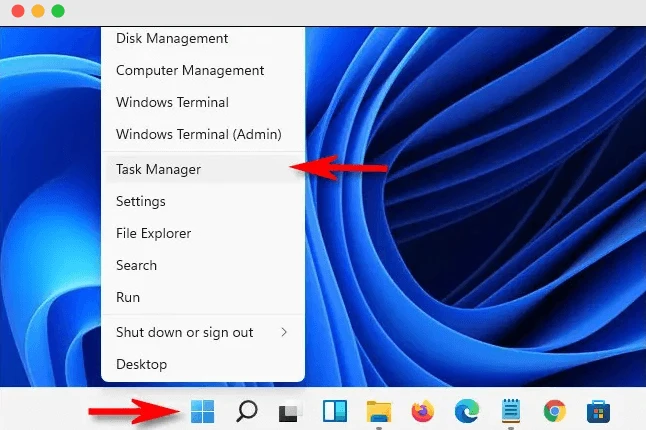
First, right-click the Start button in the lower left corner and select Task Manager from the menu. When Task Manager opens, click the Performance tab at the top and select the Memory option from the sidebar.
You can directly open Task Manager by simply pressing Ctrl + Shift + Esc keys together. If your system uses DDR2, DDR3, or DDR4 RAM, you may see RAM generation in the upper right corner, depending on your device’s make and model.

Or if your RAM speed fluctuates between 2133-3200 MHz, it’s DDR4 RAM. Other speed ranges can be matched in the table below.
So you can check the type of RAM using Task Manager.
2. Checking RAM type through Command Prompt
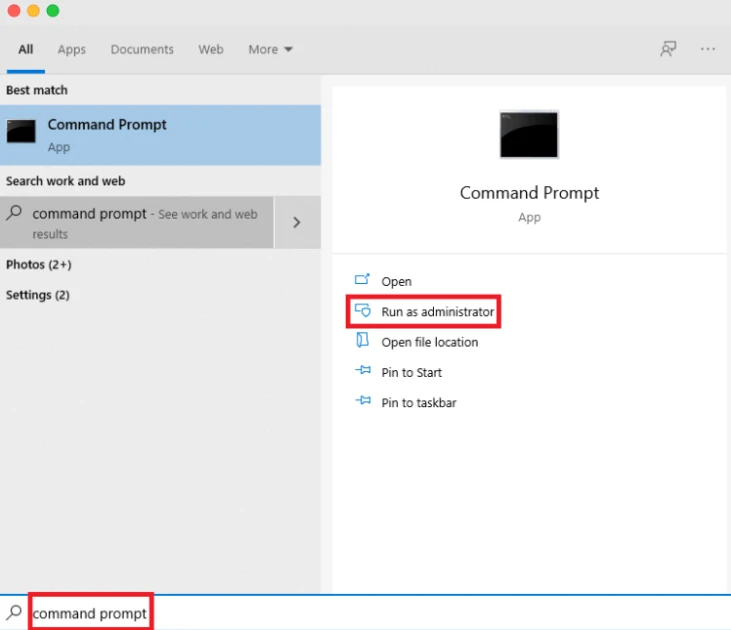
Another way to check your RAM type is to use the command line. First, click the Windows search bar and type Command Prompt. After that, click on the “Run as administrator” option.
After that, you need to enter the command “wmic memorychip get devicelocator, manufacturer, part number, serial number, capacity, speed, memory type, form factor”.
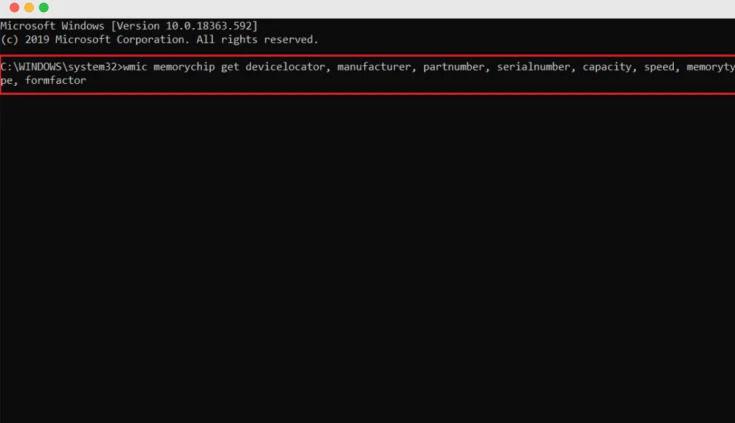
Then you will see a description of the memory type. Pay attention to the numbers displayed. With that output value, you can know some important facts about your RAM such as RAM size, RAM speed, RAM manufacturer, serial number, etc.
Then you can check the type of RAM installed in your computer using the information provided in the table below.
3. Checking the RAM type using Windows PowerShell
Command Prompt has been an important feature for determining the type of RAM, but this is an older method and Windows 10 cannot recognize DDR4 RAM. Therefore, Windows PowerShell may be your best choice. Runs on its own command line. Here’s how to check the RAM type in Windows 10 using Windows PowerShell.
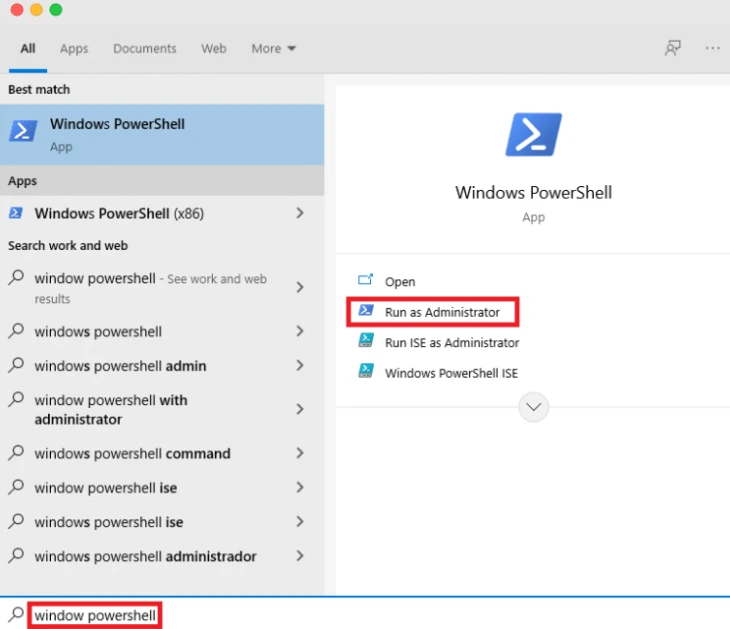
First, press the Windows key on your screen, then enter the Powershell window. Then click “Run as administrator”. Then enter this command:
Get-WmiObject Win32_PhysicalMemory | Select-Object SMBIOSMemoryType and enter
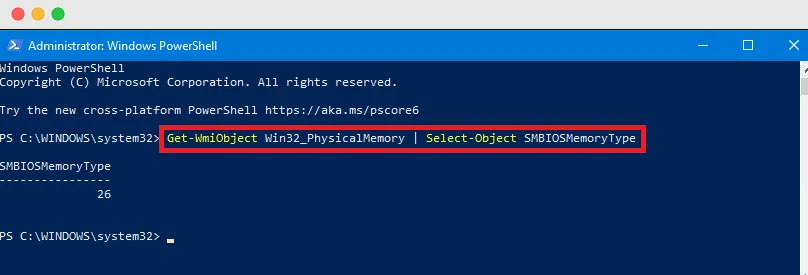
The resulting number that the command displays in the “SMBIOS Memory Type” section should match the column below to determine the type of RAM.
4. Checking RAM through the third-party app
In any case, if the other methods above do not work or you find that they do not work properly, you can use a third-party app to check your RAM type in Windows 10 and 11. This app is called CPU-Z. This is a tool that will ensure that you write down all the features you need and you should be aware of your computer’s hardware and peripherals. Here’s how to check your RAM type if you’re using the CPU-Z tool:
First, open any web browser and open the CPU-Z website. After that, you will have to scroll down the website, select your preferred language in the “Classic Version” section, and decide between a setup file or a ZIP file.
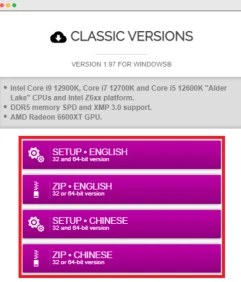
Then click “Download”. Now, if you downloaded a .zip file, extract the downloaded file to the correct folder.

Again, if you downloaded the .exe file, you’ll need to double-click the previously downloaded file and follow the on-screen instructions to properly install CPU-Z.
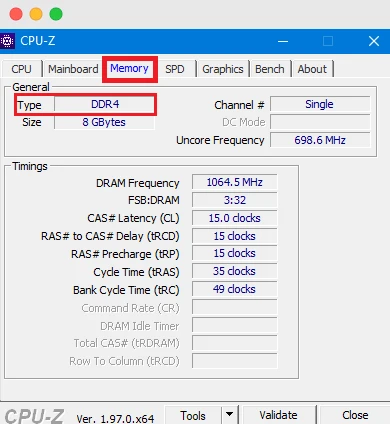
After installing the application, launch the program, go to the Memory tab and find the type of RAM installed in your system in the General section. This way you can check the type of RAM in Windows 10 and 11. If you have any doubts about RAM and its type, feel free to ask in the comments section.
How to Check RAM Type in Windows 10 and 11 (Easy Steps)
If you’re looking to check the type of RAM (Random Access Memory) installed in your PC, such as the size, speed, and even the type (e.g., DDR4 or DDR5), Windows 10 and Windows 11 both provide easy ways to view this information. In this guide, we’ll walk you through the simplest methods to check your RAM details, whether you’re troubleshooting, upgrading, or just curious about your system’s hardware.
Method 1: Using Task Manager (Windows 10 & 11)
Task Manager is a built-in tool in Windows that gives you an overview of your computer’s performance and hardware details, including RAM type.
Steps:
- Open Task Manager:
- Right-click on the Taskbar and select Task Manager, or press
Ctrl + Shift + Escto open it directly.
- Right-click on the Taskbar and select Task Manager, or press
- Navigate to the Performance Tab:
- In Task Manager, click on the Performance tab (it should be the second tab).
- Select Memory:
- In the left-hand panel, click on Memory. This will show a detailed overview of your RAM, including:
- Total Installed RAM (e.g., 8GB, 16GB)
- Memory Usage
- Speed (e.g., 2133 MHz, 3200 MHz)
- Form Factor (e.g., DIMM for desktops, SODIMM for laptops)
- Number of Channels (e.g., Single Channel, Dual Channel)
- In the left-hand panel, click on Memory. This will show a detailed overview of your RAM, including:
- Check RAM Type:
- While Task Manager gives you some useful details, it doesn’t display the exact type (like DDR3 or DDR4). However, you can check the Speed and form factor for an indication of your RAM type.
Method 2: Using System Information (Windows 10 & 11)
Windows’ built-in System Information tool provides a more detailed look at your system’s hardware configuration, including RAM.
Steps:
- Open the Run Dialog:
- Press
Win + Ron your keyboard to open the Run dialog. - Launch System Information:
- Type
msinfo32and hit Enter. This will open the System Information window. - Navigate to Memory Section:
- In the System Information window, look under System Summary for information about your RAM. Although this doesn’t always show the exact RAM type (DDR3, DDR4, etc.), it provides a good overview of your system’s hardware, including the total installed RAM.
Method 3: Using CPU-Z (Third-Party Software)
If you need more detailed and specific information about your RAM, including the exact type (e.g., DDR4 or DDR5), speed, and timings, a third-party tool like CPU-Z is a great option.
Steps:
- Download CPU-Z:
- Go to the CPU-Z official website and download the software. It’s free to use.
- Install and Launch CPU-Z:
- Once downloaded, install the program and launch it.
- View RAM Information:
- In CPU-Z, go to the Memory tab. Here, you’ll find detailed information about your RAM, including:
- Type (DDR3, DDR4, DDR5)
- Size (e.g., 8GB, 16GB)
- Speed (e.g., 2133 MHz, 3200 MHz)
- Channel (Single, Dual, Quad)
- Timings (CAS latency, etc.)
CPU-Z also provides information on the SPD tab, where you can see details about each RAM stick if you have more
FAQs: How to Check RAM Type in Windows 10 and 11
Here are some frequently asked questions (FAQs) about checking RAM type and related details in Windows 10 and 11.
1. How do I check the exact RAM type (e.g., DDR3, DDR4, DDR5) in Windows 10 or 11?
- Answer: Task Manager and System Information provide some basic details, but they don’t always show the exact RAM type (DDR3, DDR4, DDR5). For more specific information, you can use third-party tools like CPU-Z. This tool will clearly display the RAM type, speed, size, and other details such as timings.
2. Why is knowing the RAM type important?
- Answer: Knowing your RAM type is essential when upgrading or troubleshooting your system. For example, DDR4 offers faster speeds and better performance than DDR3, and DDR5 provides even more advanced features. Understanding the type and speed can help you make informed decisions for system upgrades and ensure compatibility with your motherboard.
3. How can I see the total RAM and its speed in Windows without third-party software?
- Answer: You can check the total RAM size and speed directly in Task Manager (by pressing
Ctrl + Shift + Escand navigating to the Performance tab), or through System Information (by typingmsinfo32in the Run dialog box). However, Task Manager offers more direct access to speed, while System Information gives a broader view of system configuration.
4. What if my Task Manager doesn’t show the RAM type (e.g., DDR3, DDR4)?
- Answer: Task Manager in both Windows 10 and 11 may not show the exact RAM type (DDR3, DDR4, etc.). If you need this specific information, use CPU-Z, a third-party tool that provides detailed information about your RAM, including its type, speed, and more.
5. How do I check if my RAM is running in Dual Channel or Single Channel mode?
- Answer: You can see if your RAM is running in Dual Channel or Single Channel mode in Task Manager under the Memory section in the Performance tab. It will indicate whether you’re using single or dual-channel configuration, which affects memory bandwidth and overall system performance.
6. What should I do if the information shown in Task Manager is incorrect?
- Answer: Sometimes, Task Manager may not display the correct RAM information due to a hardware issue, outdated drivers, or incorrect settings in the BIOS/UEFI. In such cases, try updating your RAM drivers, checking your BIOS settings, or using tools like CPU-Z to cross-check the information. If the problem persists, you may want to contact your hardware manufacturer or consult with a technician.
7. Can I upgrade my RAM without checking its type first?
- Answer: It’s highly recommended to check your RAM type and specifications before attempting an upgrade. RAM is not universally compatible, so you’ll want to ensure that the new modules match the type (DDR3, DDR4, DDR5), speed, and capacity supported by your motherboard.
8. How can I check the RAM capacity on my laptop or desktop?
- Answer: Both laptops and desktops will display their installed RAM size in Task Manager (under the Memory tab) or System Information (
msinfo32). These methods will tell you the total amount of RAM installed, regardless of whether you’re using a desktop or laptop.
9. Can I check my RAM speed on Windows 10 or 11 without third-party software?
- Answer: Yes, you can view your RAM speed in Task Manager. Simply press
Ctrl + Shift + Esc, navigate to the Performance tab, and click on Memory. The speed (measured in MHz) will be listed in the details provided. However, if you need more detailed information (like latency, timings, etc.), you’ll need to use third-party software like CPU-Z.
10. Is it possible to upgrade RAM type (e.g., DDR3 to DDR4)?
- Answer: You cannot simply swap out DDR3 RAM for DDR4 or DDR5, as the types of RAM are physically different and require compatible motherboards. Upgrading from DDR3 to DDR4 typically means you’ll also need to upgrade your motherboard, as DDR4 requires different memory slots and electrical standards than DDR3.
My Thoughts
Checking the RAM type and other related specifications on your Windows 10 or 11 system is quite easy and can be done through built-in tools like Task Manager or System Information. For more detailed insights, third-party software like CPU-Z provides a comprehensive breakdown of your memory configuration. Whether you’re troubleshooting, upgrading, or optimizing your system, knowing your RAM’s specifications is crucial for making informed decisions.
Conclusion
From the above description, we can conclude that there are several ways to check the RAM type in Windows 10. Users are free to use any of the above methods. All methods are very simple and clear.
I tried to give step-by-step instructions for each method so that even beginners can easily check the RAM type in the correct way. So, with the help of this article, I hope everyone knows how to check RAM type in Windows 10 and 11.
If you still have questions or concerns about this topic, feel free to ask us in the comments section below. I will be happy to help you.
- All Crypto Mining Methods: Detailed Breakdown of All

- Bitget Wallet: A Complete Guide for New and Experienced Traders 2025

- Bitget Exchange Review: A Comprehensive Guide to Features, Fees, and Benefits

- How to Create a Download Link: A Complete Guide (Including WordPress)

- 13 Best AI Tools Revolutionizing Daily Life: A Guide to the Best AI Technologies for Everyone

- How to See Specs of PC: A Comprehensive Guide

Recommendation: In-depth guide on Crypto Mining with the advantages and disadvantages. 10 Best Mining Rig Frames For Crypto Mining Setup In 2022 [Top] 8 Best Risers for Mining with Your GPU in 2022 RTX 3060 Ti Mining Profitability Setup in 2022 For effective Crypto Mining Best GPU for mining profit 2022 #Ethereum & #Altcoins Mining (with Pros & Cons) 10 Best Mining Frame /Mining Rig frame for Crypto Mining Setup in 2022 6 Best Motherboard for Ethereum Mining 2022 – Comprehensive Review Recommendation: Monitors to look at; 10 Best Cheap 240hz Gaming Monitors Reviewed By Mr. Wackadoo-Cheapest 240hz Monitors in 2022 7 Best Monitor For Xbox Series X – Fastest Gaming Monitor for Competitive Gamers Recommendation: Games to look at; Top 23 Best AA Games You Should Play Right Away| low budget games pc Top 25 FREE Single Player Games of All Time TOP 24 Open World Best Games on PC Today, Ranked by Mr. Wackadoo Dragon Age 4 release date, story, gameplay, and everything else so far Before the Blood| Announce Trailer| PC debut| Before the Blood Game on Steam— Enter Yes™ Recommendation: RTX graphics card chipset to look at; Best RTX 3070 Graphics Cards of 2021 Top GPUs-Best Graphics Cards for Gaming in 2021–2022 Best 2022 GeForce RTX 3080 Amazon Graphics Cards, Check Out Today’s Best Deal Best Gaming Headsets for PS4 and PS5 in 2022 and beyond List Of Best RGB Keyboards To Buy In 2021 and beyond






